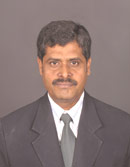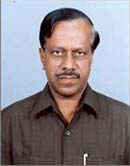Contents: 2024 | 2023 | 2022 | 2021 | 2020 | 2019 | 2018 | 2017 | 2016 | 2015 | 2014 | 2013 | 2012 | 2011 | 2010 | 2009 | 2008 | 2007 | 2006 | 2005 | 2004 | 2003 | 2002 | 2001
2007, 22
Spoken TAMIL character recognition
language: English
received 13.11.2007, published 07.12.2007
Download article (PDF, 220 kb, ZIP), use browser command "Save Target As..."
To read this document you need Adobe Acrobat © Reader software, which is simple to use and available at no cost. Use version 4.0 or higher. You can download software from Adobe site (http://www.adobe.com/).
ABSTRACT
Speech is one of the most complex signals and the powerful tool for communication. It has been a long desire of the scientists that the machine should recognize the speech of the human beings either for the machine to function on voice commands or for giving a text output of the speech. Automatic recognition of speech by machine has been a goal of research for more than four decades. Now speech recognition tool has become a necessity for busy executives and industrial applications. Since beginning the research in this direction has been concentrating on English Speech recognition. Only from the last few years works are being carried out for recognizing speech in other languages. The Indian languages are structurally and syntactically different from Latin. This paper presents an approach for the recognition of spoken characters in Indian languages particularly Tamil using acoustic features of individual letters. A three layered back propagation neural network approach used for solving the problem is presented. The efficiency of the method presented is highlighted by applying the same to Tamil characters recognition.
Keywords: automatic speech recognition, Indian languages, Tamil language, neural network
11 pages, 3 figures
Сitation: M. Chandrasekar, M. Ponnavaikko. Spoken TAMIL character recognition. Electronic Journal “Technical Acoustics”, http://www.ejta.org, 2007, 22.
REFERENCES
1. Davis K. H., Biddulph R., and Balashek S. Automatic recognition of spoken digits, Journal of Acoust. Soc. of America, vol. 24, 637–642, 1952.
2. Olson H. F., and Belar H. Phonetic Typewriter. Journal of Acoust. Soc. of America., 28(4), 1072–1081, 1956.
3. Fry D.B. Theoretical aspects of mechanical speech recognition. J. British Inst. Radio Engineer, 19(4), 211–218, 1959.
4. Forgie J. W., and Forgie C. D. Results obtained from vowel recognition Computer program. J. Acoust. Soc. of America, 31(11), 1480–1489, 1959.
5. Suzuki J., and Nakata K. Recognition of Japanese vowels-preliminary to the recognition of speech. J. Radio Res. Lab, 37(8), 193–212, I961.
6. Sakai T., and Doshita S. The phonetic typewriter. Information Processing 1962, Proc. IFIP. Congress, Munich, pp. 445–450, 1962.
7. Nagata K., Kato Y., and Chiba S. Spoken digit recognizer for Japanese language. NEC Res. Develop., 6, 1963.
8. Juang B. H., Childers D., Cox R. V., DeMori R., Furui S., Mariani J. J., Price P., Sagayama S., Sondhi M. M., and Weischedel R. The past, Present, and Future of Speech processing. IEEE signal processing magazine, pp. 24–48, 1998.
9. Jiang Minghu, Yuan Baozong, Tang Xiaofong, and Lin Biqin. Fast Learning algorithms for Time-Delay Neural Networks Phoneme Recognition. Proc. ICSP, pp. 730–733, 1998.
10. Chandrasekar C., and Sivarama Krishna Rao J. Y. Recognition of Consonant – Vowel (CV) units of Speech Indian Lnaguages. Proc. National Seminar on Information Revolution and Indian Languages, Hydrabad, pp. 22.1–22.6, Nov., 1999.
11. Ganga Shetty S.V., and Yagnanarayana B. Neural Network Models for recognition of Consonant – Vowel (CV) utterances. INNS-IEEE International Joint Conference on Neural networks, Washington DC, pp. 1542–1547, July, 2001.
12. Pusateri E., and Thong J.M. N-best List Generation using Word and Phoneme recognition fusion. 7th European Congress on Speech Communication and Technology (Euro Speech), September, 2001, Aalborg, Denmark.
13. Salomon J., King S., and Osborne M. Framewise phone classification using support vector machines. Proceedings in International Conference on Spoken Language Processing, Denver, 2002.
14. Mporas I., and Fakotakis N. Least Squares Support Vector Machine based Phoneme Recognition. SPECOM 2005, pp. 377–380, Patras, Greece, Oct. 2005.
15. Mporas I., Ganchev T., Zervas P., and Fakotakis N. Recognition of Greek Phonemes using Support Vector Machines. Springer, Berlin /Heidelberg, pp. 290–300, 2006.
16. Schafer R.W., and Rabiner, L.R. Digital Representation of speech signals. Proceedings of IEEE , vol. 63, N°4, pp. 662–677, April 1975.
17. Furui S. Cepstral analysis technique for automatic speaker verification. IEEE trans. Acoust. speech and signal processing, vol. 29, pp. 254–272, April, 1981.
18. Lippmann R. P. An Introduction to Computing with Neural nets. IEEE Acoust. speech and signal processing Magazine, pp. 4–22, April, 1987.
 |
M. Chandrasekar received his M.E. degree from Anna University, Tamilnadu in 1987. He is doing research in recognizing Tamil sentences. He has 12 years of industrial experience and 15 years of teaching experience. He is now serving as Professor and HOD for TQM department in SRM School of centre of excellence for TQM, SRM University Chennai, Tamilnadu, India. e-mail: chandramu2000(at)yahoo.co.in |
|
 |
Murugesan Ponnavaiko is a graduate in Electrical Engineering and a Post graduate in Power System Engineering, from the College of Engineering Guindy. He received his PhD degree in Optimal Distribution System Planning from I.I.T.(Delhi) in 1983. He has proven record of excellence as Technologist, Administrator, Academic and Leader. He started his carrier from Tamil Nadu Electricity Board in 1972 and had seventeen years of eventful service as Consultant and Administrator in the Public Power Sectors in India and abroad. He entered into the Academic World in 1986 as a Professor of Electrical Engineering and taught power system courses for three years in Libya. From 1989 till June 2000, he served as the Professor and Head, Dept. of CSE, initially at Mookambigai college of Engineering, then at Regional Engineering College, Tiruchirapalli, and later at the Crescent Engineering College, Chennai. He then served as the Director, at the level of Vice-Chancellor at the Tamil Virtual University from July 2000 till August 2003. Then served as the Director, Research and Virtual Education at the SRM University from September 2003 till 10th July 2007. At present he is the Vice-Chancellor, Bharathidasan University, Tamilnadu. e-mail: ponnav(at)gmail.com |
|
